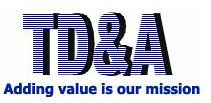
1. What is SA 8000?
SA 8000, an International Standard, was first developed in 1997 and in 2002 was the second release. This Standard indicates requirements for Social Accountability Management as to improve working condition worldwide.
SA 8000 was formerly developed by Social Accountability International (SAI), formerly the Council on Economic Priorities (CEP) and based on the principles of international human rights norms as described in International Labor Organization convention, the United Nations Convention on Rights of the Child and the Universal Declaration of Human Rights. Founded in 1969, Council on Economic Priority Rights, a Nongovernmental Organization (NGO) has worked in the field of social accountability cooperation and headquartered in New York.
This Standard can be applied to all types of large-scale or small-scale business in developing countries as well as developed countries.
SA 8000 Standard is a foundation for many businesses to improve their working condition. It is not the purpose of SA 8000 to stimulate or end the contract signed with the supplier, but it provides technical support and increases awareness to enhance living and working condition.

2. Versions of SA 8000
2.1. First Version – SA8000:1997
Issued in 1997 by Social Accountability International (SAI).
This initial version laid the foundation for a social responsibility management system, based on ILO principles, the UN Declaration of Human Rights, and the UN Convention on the Rights of the Child.
2.2. SA8000:2001
Updated to reflect changes in international law and improve implementation feasibility.
Enhanced management system requirements and leadership accountability.
2.3. SA8000:2008
Emphasized the execution and improvement of the social management system.
Included clearer clauses on freedom of association, collective bargaining, and safe working conditions.
Required effective internal grievance mechanisms.
2.4. SA8000:2014
The latest version (as of 2024).
Strongly focuses on social accountability management systems, integrating the PDCA (Plan-Do-Check-Act) model.
Key highlights include structured risk assessments, corrective actions, and continuous improvement processes.
3. Scope of Application:
- Manufacturing and processing enterprises across all industries.
- Service providers that employ labor.
- Supply chains of major brands aiming to ensure social responsibility.
- Factories and production facilities seeking to improve working conditions.
- Organizations wishing to demonstrate their commitment to complying with international labor standards.
4. Fundamental requirements of SA 8000
Clause 1. Child Labour
- No employment of children under 15 years old (or lower if specified by local law).
- If child labor has occurred, the organization must support rehabilitation and education.
- Implement preventive policies and risk management for child labor.
Clause 2. Forced or Compulsory Labour
- No coercion in any form (threats, retention of documents, withheld wages).
- Workers must be free to leave employment with reasonable notice.
Clause 3. Health and Safety
- Provide a safe and hygienic workplace.
- Conduct regular occupational safety training.
- Designate responsible personnel and maintain an occupational health and safety system.
Clause 4. Freedom of Association and Right to Collective Bargaining
- Workers have the right to form and join trade unions and engage in collective bargaining without interference or retaliation.
- Organizations must respect this right, even in regions with legal restrictions (alternative representation must be allowed).
Clause 5. Discrimination
- No discrimination in recruitment, training, promotion, or compensation based on gender, ethnicity, religion, age, disability, sexual orientation, political opinion, etc.
- Commitment to fair and equal treatment for all workers.
Clause 6. Disciplinary Practices
- No physical punishment, mental abuse, verbal harassment, or humiliation.
- Disciplinary policies must be clear, transparent, and respectful of human dignity.
Clause 7. Working Hours
- Comply with national labor laws and ILO conventions.
- Maximum of 48 hours/week, up to 12 hours overtime/week, with at least one day off per week.
- Overtime must be voluntary and fairly compensated.
Clause 8. Remuneration
- Pay at least the legal minimum wage, sufficient to meet basic needs and allow for some discretionary income.
- No unlawful wage deductions.
- Transparent and timely payment.
Clause 9. Management System
- Organizations must develop and maintain a social accountability management system in line with SA8000, including:
- Social responsibility policy
- Risk assessments and internal audits
- Worker training programs
- Grievance mechanisms
- Continuous improvement
- Dialogue with worker representatives
5. Benefits from applying SA 8000
- Having chance to achieve competitive advantage; attracting more customers and penetrating new markets of high requirements.
- Improving the business image; creating reliability to all parties with “Social accountability secure”.
- Decreasing cost of managing different social requirements.
- Gaining better position in labor market and showing obvious commitment on social and ethical standards to attract well-qualified and experienced personnel. This is considered as “Key to success” in the new age.
- Improving employees’ loyalty and commitment to the business.
- Enhancing productivity, optimizing managing effectiveness.
- Creating good relationship with customers and obtaining customer’s loyalty.

